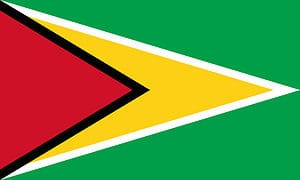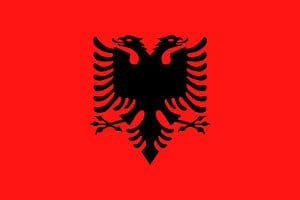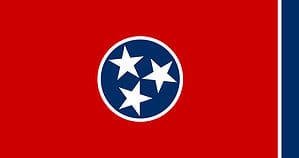For 60 years, the Jamaican flag has been the island’s symbol of strength, unity, and freedom. The flag, often called “The Cross” or “Black, Green, and Gold,” has also been a source of pride and inspiration for Jamaicans who show its importance through the Pledge of Allegiance.
But the flag of Jamaica has a rich history with an exciting yet controversial background.
Today, explore this history and learn about the true meaning of the flag of Jamaica. We also seek to understand what the flag’s black, green, and gold colors symbolize to the island people.
Here’s an insight into the flag of Jamaica’s history, meaning, and symbolism.
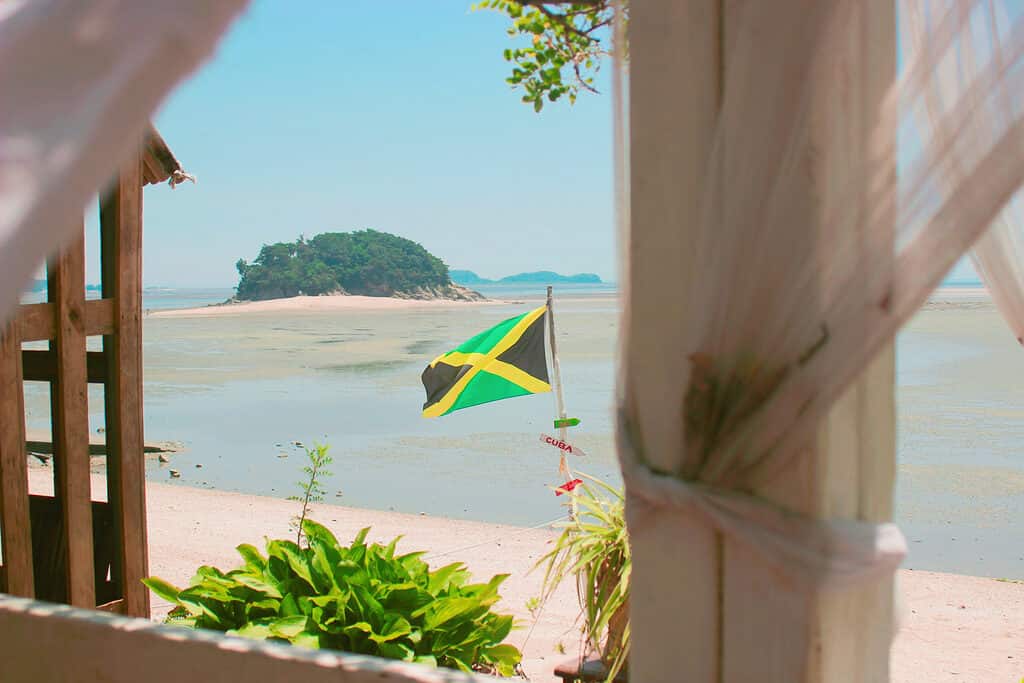
For 60 years, the Jamaican flag has been the island’s symbol of strength, unity, and freedom.
©snooooxxx/Shutterstock.com
History of the Flag of Jamaica
Once the West Indies Federation was dissolved, the British-controlled islands of Jamaica, formed in 1958, moved to establish a national flag of their own. The archipelago of islands (now Jamaica) had to set its flag before independence day in 1962. But the months to independence proved hectic and intense, with the flag picking almost delaying independence preparations.
The search for the national flag began when the then Prime Minister, Norman Manley, created an Independence Celebrations Committee and appointed its members. The bipartisan committee from Jamaica’s parliament decided to hold a competition in September 1961 to select the best national flag for the new Jamaica. Over 368 entries were present, with the winning submission expected to win £100 as a reward.
Over 368 entries were submitted for consideration by the committee. But only 12 were shortlisted and presented to the Joint Committee of Parliament for further deliberations.
The committee selected the most suitable of the 12 designs presented to it as the new national flag for Jamaica. The flag picked had horizontal stripes aligned with a central black band with gold stripes at the top and below. The flag of choice also had greater green stripes on the design’s top and bottom.
Flag Controversy
After agreeing on the flag design, the decision was forwarded to the House of Representatives on June 6, 1962, for review. The flag design was accepted, and the Joint Parliamentary Committee forwarded it to the Colonial Office for clearance and to ensure no infringement on other flags.
But the then Colonial Office rejected the initial Jamaica flag design for infringement. It was discovered that the flag’s design was similar to Tanganyika’s independence flag. Tanganyika has since been renamed Tanzania. Both flags had the same design structure with black, yellow, and green stripes.
The Committee had to come up with a new design before independence. As a result, Jamaica’s House of Representatives convened on June 20 to decide on a new flag design. After a heated and historical debate, Jamaica’s House of Representatives agreed on maintaining the original design but with a new twist.
Flag Re-design
The parliament’s leader Donald Sangster started the house debate by proposing that the committee’s design be retained. However, in his opening remarks, the House leader proposed a few alterations to the design. His revised design had a diagonal gold cross above and below green triangles. In addition, the revised design’s side triangles were black.
House members agreed on the diagonal cross design, although a debate arose over color. One member, Felix Toyloy, opposed having black on Jamaica’s national flag, terming the color a “sign of distress.”
But most members shot down Toyloy’s suggestion to remove black from the proposed design. They argued that most Jamaicans are black, after all. But Toyloy didn’t take this lying down. Instead, he defended his proposal by saying he thought more of the color than the people. Eventually, they agreed to retain the design initially proposed by the house committee and amended it as per Sangster’s proposal.
With the argument done, the house speaker, Florizel Glasspole, called for the representatives to vote on the amended design. For this occasion, all House of Representative members stood, and with a shout of “Aye,” the motion was approved. The House of Representatives did submit their agreements to the Colonial Office for final clearance from the Colony’s Admiral.
Jamaica’s flag was officially adopted and hoisted at midnight on the country’s Independence Day on August 6, 1962. Raising Jamaica’s flag and lowering the British flag signified Jamaica’s freedom and self-rule after 300 years as a slave colony.
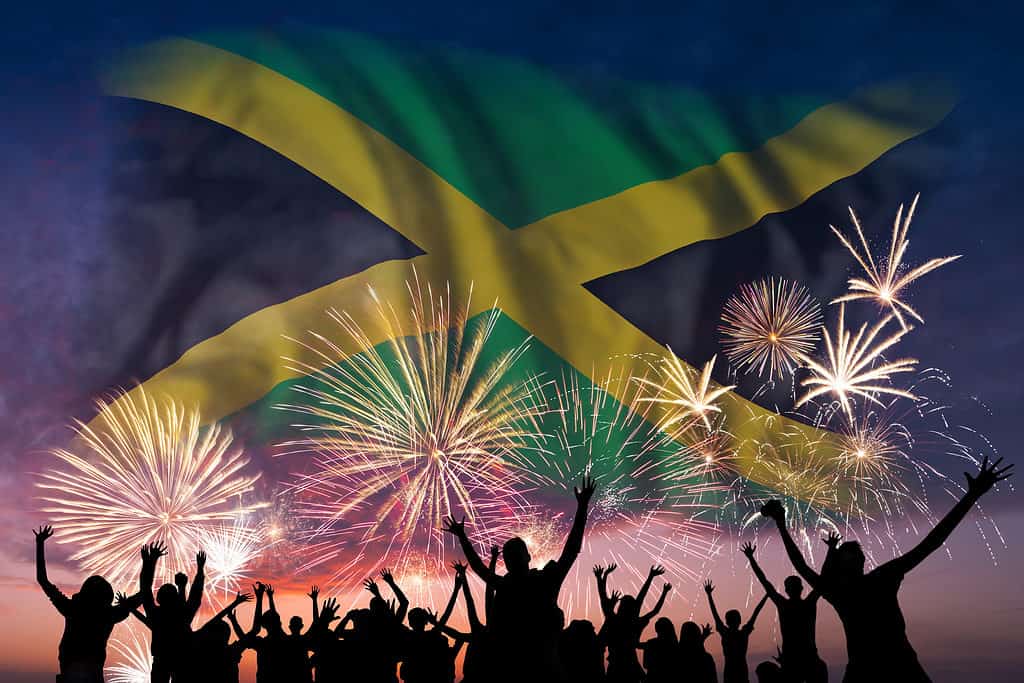
Jamaica’s flag was officially adopted and hoisted at midnight on the country’s Independence Day on August 6, 1962.
©Dmytro Balkhovitin/Shutterstock.com
Original Meaning of the Flag of Jamaica
The Jamaican flag design is unique since it is one of the few with no blue, red, or white colors. Instead, its design is a diagonal cross that creates four triangles in contrasting positions. The yellow or gold cross replicates the British Admiralty Pattern with the width-to-length ratio set at 1:2. The above and below triangles are green, while the left and right ones are black.
During independence, the House of Representatives recorded the following as meanings of the colors.
Black
The back color on the Jamaican flag represents the resilience and strength of the Jamaican people against colonial hardships.
Green
Green represents the flora and fauna found all across Jamaica.
Yellow/Gold
The yellow or gold color is the sunshine descending on Jamaica’s lands and fields.
The saltire, a replica of the Admiralty pattern, is a distinctive feature, although no official symbolic meaning exists.
Amended Meaning of the Flag of Jamaica
Since independence, the meaning of these colors has changed to be more inclusive of Jamaica’s people and resources. After a February 1996 review, an appointed National Symbols and Observances committee presented Jamaicans with new Jamaican flag color meanings.
Black
Initially, black represented the struggle and resilience of Jamaicans against oppression. The meaning has since been amended. Black now depicts the color of the people of the land.
Green
Green now signifies the hope on land and the abundance of Jamaica’s agricultural resources.
Yellow
Yellow or gold now depicts the beauty of sunlight over Jamaica and the country’s abundant riches and wealth.
The house committee led by Professor Rex Nettleford saw it best to adjust the official meaning for a positive outlook of the colors of Jamaica’s national flag.
The Symbolism of the Flag of Jamaica
The Jamaican flag is a symbol of the country’s independence and identity. In its official interpretation, it reads as
“The sun shines; the land is green, and the people are strong and creative. The color green represents hope and Jamaica’s abundant agricultural resources. Gold represents the natural beauty of the sunlight and the country’s wealth. Black is a representation of the strength and creativity of the nation’s people.”
Since the flag symbolizes national pride for the people, there is a National Flag Code of Conduct. The code of conduct includes guidelines on correctly displaying, using, and handling the flag in public.
Below is an overview of Jamaica’s National Flag Code of Conduct regulations.
- The flag is the country’s sacred emblem and should receive the utmost respect. Once faded or torn and is to be replaced, the flag should only be torched or discarded privately.
- The flag should not touch the floor, nor should you place it on the ground.
- No one should use the flag to drape the coffin of a foreigner — only Jamaicans.
- All flags must fly at half-mast when at times of mourning (and at the Prime Minister’s instructions).
- The national flag should be larger than other flags present simultaneously during display times. Only foreign diplomatic embassies, consulates, or missions can hoist larger flags than the national flag.
- The flag should not be a decoration or for temporary use except for state occasions.
- When in procession with other flags, the Jamaican national flag should sit on the lead right-hand side of the front center of the line.
- During the hoisting and lowering of the Jamaican flag, all citizens present have to stand at attention and face the flag. People in uniform need to salute while men remove their hats.
- The Jamaican national flag should fly on government buildings, municipal offices, police stations, and government-aided schools at all times. In addition, private establishments must hoist the flag during national and state occasions.
- Government-owned ships, aircraft, rail, and vehicles should bear a representation of the Jamaican national flag. Merchant ships with Jamaica registry are required to fly the flag too.
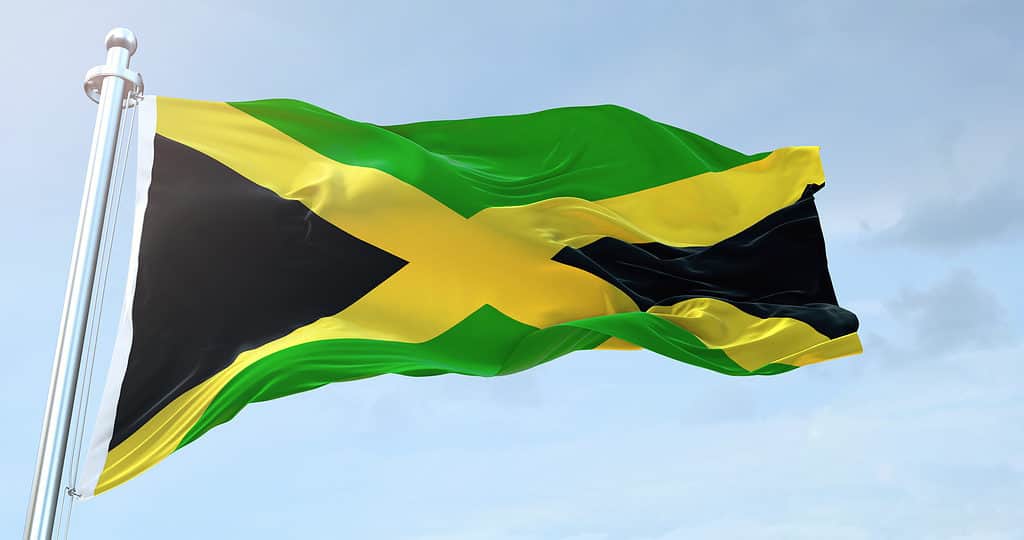
The colors of the Jamaican flag represent and honor the sun, the land and its people.
©iStock.com/EA
Variations of Jamaica’s flag
Jamaica has had a variety of flags during its time as a British colony.
The first flag design during the nation’s initial years as a British colony came about between 1875 and 1906. The design had a blue background with a small upper-left section bearing the flag of the United Kingdom. It also had the right side’s center line with a white circle with the image of a crocodile above a crown and a St. Georges cross.
The red cross had five pineapples spread across, while the whole figure lay inside a round white shape. A helm is also on the round white shape to signify the British Imperial Crown.
Between 1906 and 1957, the colonial flag saw changes to the design with the crown removed. Each side of the white shield also had an indigenous woman and man from the Taiwo tribe (Arawak), with blue bands on either waist. The woman and man stood atop arcs bearing the motto, “Indus uterque serviet uni,” which translates to “All Indies will serve one.”
The 1957-1962 period saw improvements on this design, including the crocodile standing atop a golden British monarch crown. The colony also changed the helm of the shield, replacing it with a golden Crown standing below the crocodile. Part of this change was in the motto, which shifted from “All Indies will serve one” to “Out of Many, One People.”
The Blue Ensign
The blue ensign is another colonial flag still in use to date. The government sometimes uses the flag as the official flag when paying homage to the colonial design. The design includes a flag with a bright blue background, while the top left has a small Jamaican flag.
The Red Ensign
The red ensign was an unofficial variation of the Jamaican flag during its colonial period. Its design resembles the Blue Ensign, similar to the Governor’s Union Flag of 1957 to 1962. The difference is that this flag has a red background with no helm and mantling atop the shield. Another difference evident is the absence of the shield’s outline, which is present in the official blue ensign.
Coast Guard Ensign
The Coast Guard Ensign is a replica of the Jamaican Union Jack and a variation of the flag used on several ships and boats. In its design, the flag bears a white background with the red St. George cross (England White Ensign), while the national flag lies in the left section.
Final Thoughts
The Jamaican flag has had an interesting and exciting background — from its selection to rejection and later its redesign. Despite all the initial controversy, the flag has turned out to be a unique design giving Jamaicans a sense of pride and identity. Click here to learn about every single flag in the world!
Up Next
- The Flag of Uzbekistan: History, Meaning, and Symbolism
- The Ukrainian Flag: History, Meaning, and Symbolism
- The Flag of the United States of America: History, Meaning, and Symbolism
The photo featured at the top of this post is © iStock.com/kckate16
Sources
- OPM, Available here: https://opm.gov.jm/symbols/national-flag/
- AA Registry, Available here: https://aaregistry.org/story/jamaica-gains-independence-from-britain/
- CRW Flags, Available here: https://www.crwflags.com/fotw/flags/tz-tng.html
- Caricom, Available here: https://caricom.org/the-west-indies-federation/
Thank you for reading! Have some feedback for us? Contact the AZ Animals editorial team.



